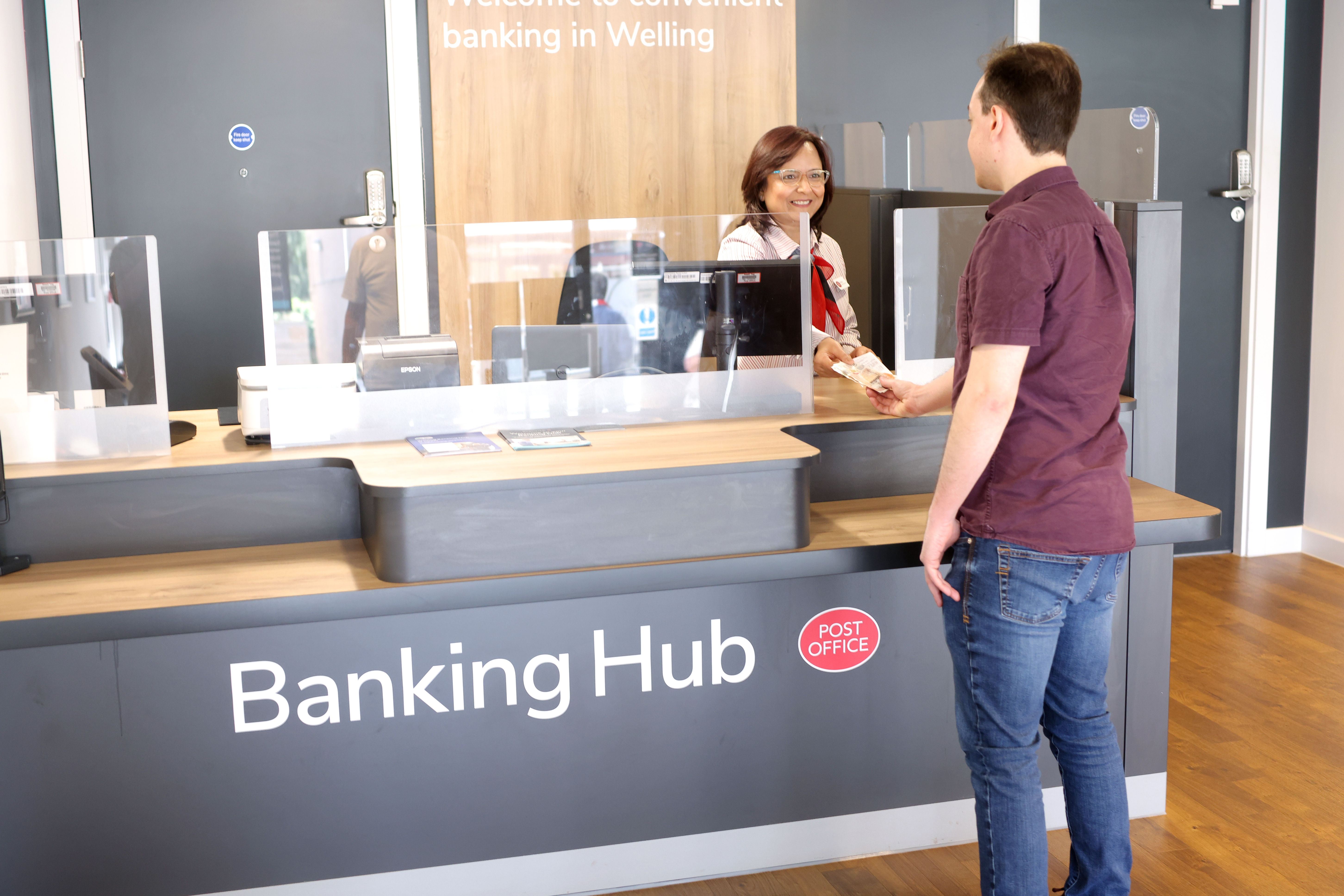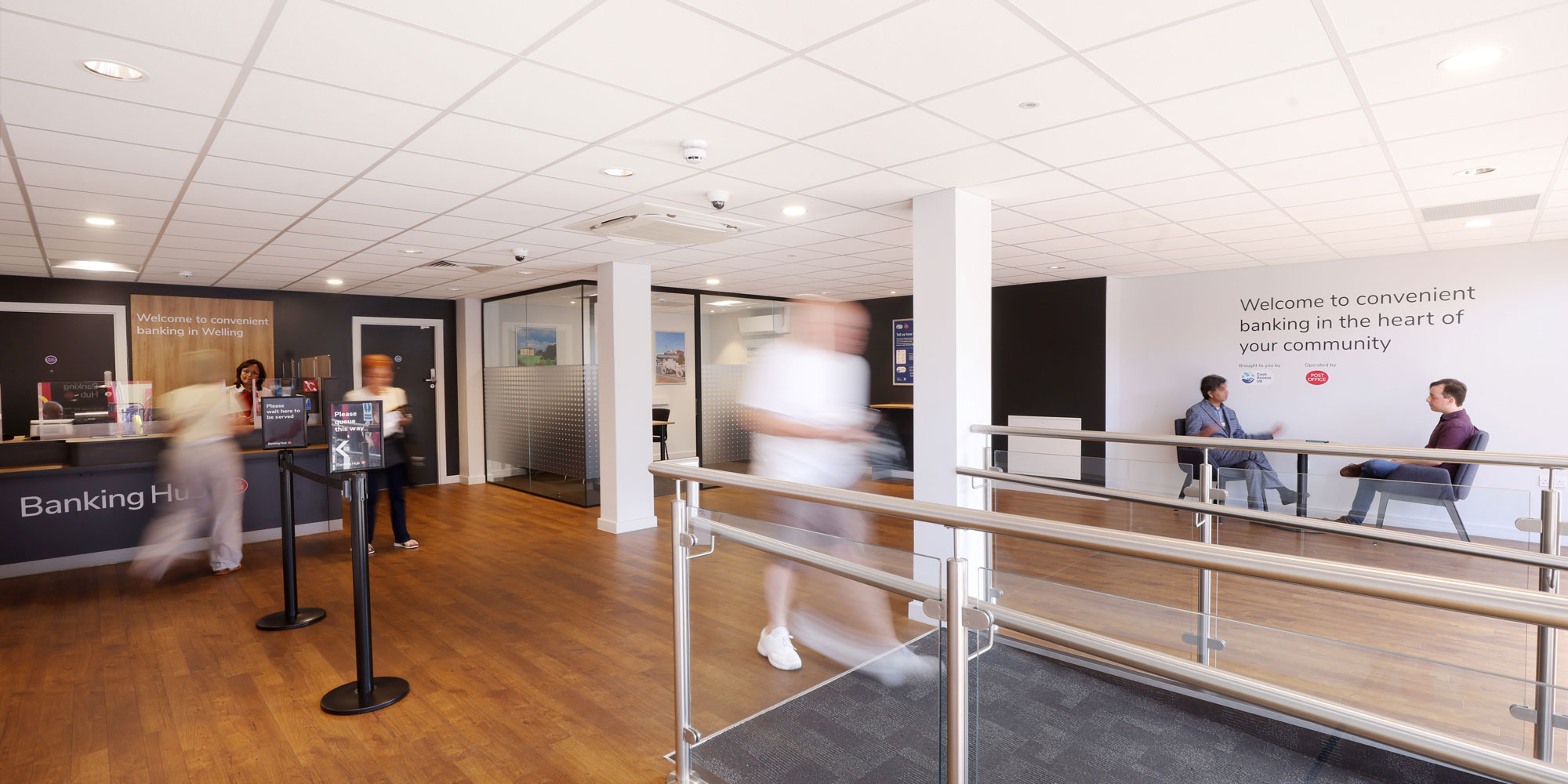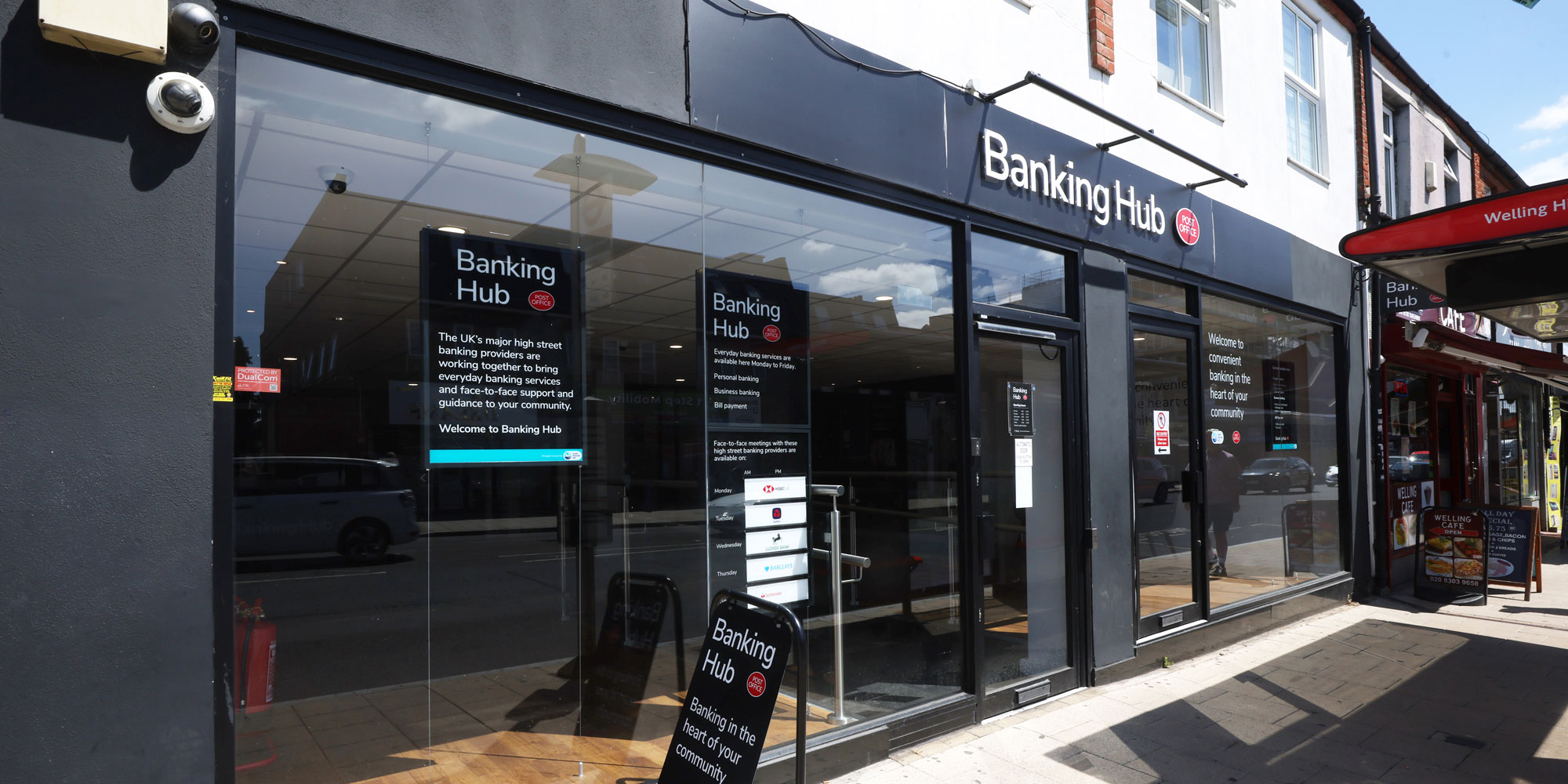
First in Which? Money magazine
This story first appeared in Which? Money magazine. Join for reviews and investigations, plus 1-to-1 guidance from our experts.
Join Which? MoneyGet 25% off until 8th January 2026 - just £36.75 a year.

It’s 11am on a Friday in late June, and already blazingly hot as I walk down Welling High Street in south-east London.
The busy thoroughfare is an eclectic mix of cafés, hair salons, hardware outlets and more. Ahead I spotted my destination, nestled conveniently next to a bus stop – the Welling community banking hub.
Hubs like this have been touted as the solution to Britain’s shrinking bank branch network. There are now 186 spread across all regions of the country, plus another 58 in the pipeline (Cash Access UK lists them all).
But how do hubs actually work – and are they fit for purpose? That’s what I’ve come to Welling to find out.

This story first appeared in Which? Money magazine. Join for reviews and investigations, plus 1-to-1 guidance from our experts.
Join Which? MoneyGet 25% off until 8th January 2026 - just £36.75 a year.
Which? has been tracking bank closures for more than a decade now, and by our count banks and building societies have closed a staggering 6,595 branches since January 2015 – 67% of the nation’s total branch network.
A survey of Which? members found that 40% had lost access to their local bank branch in the past five years.
The solution which is often touted is the community banking hub.
This is a venue shared by several banks where you can conduct everyday banking tasks, and speak to a representative of your bank.
Hubs are cheaper for banks than running their own branches and can reduce costs and inconvenience for customers who might need to travel long distances to find a branch.
As you pass through the glass front door, the cool interior is a welcome relief from the sun. The back of the hub is taken up by a counter to the left and a private room of frosted glass on the right, containing a table and chairs. Off to the side is a small waiting area with information pamphlets on the wall and a couple of seats.
It feels like a cross between a traditional bank branch (minus the ATMs), and a post office (minus the racks of envelopes and stationery), which isn’t far from the truth.

Community banking hubs provide counter services run by post office staff for deposits, withdrawals and paying bills. Hubs also offer face-to-face banking with a representative of your bank on a rotation basis for more complicated enquiries.
Since my trip had been planned in advance with Cash Access UK (CAUK) – the non-profit responsible for running the UK’s hubs – the staff were expecting me. The hub manager, Rizwan Salahuddin, gives me a tour and explains the services it provides.
As we pass the glass-walled room, he introduces me to the two Santander banking representatives waiting for their next customer appointment.
Friday is Santander’s day; HSBC staff are in on a Monday, NatWest’s on Tuesday, Lloyds Bank’s on Wednesday and Barclays’ on Thursday. The hub is closed at the weekend.
The Santander staff say that customers have largely responded well to the community hub solution. They both think it’s a great idea to have a single location where customers from different banks can access banking services in person.
After the tour, I decided to try out the hub’s services for myself. I ask the counter staff if I can withdraw £20 – something I’ve done countless times at a traditional branch.
The process felt much the same – I slotted my card into the chip and Pin machine, entered my Pin, and a few seconds later I was handed the cash along with my receipt.
Although it had been quiet when I arrived, customers had quickly started appearing and queuing up for counter services – customers who otherwise would have had to travel far beyond their local area to access these services.

Welling lost its last bank branch in 2021, and the wider Bexley and Sidcup area had just one branch left at the time of my visit, but this closed in August.
Although branch closures are often thought of as a rural problem, Welling is one of several neighbourhoods in big cities that are so low on branches they’ve received a hub.
Anyone can put in a request to Link – the UK’s leading cash access and ATM network – for a hub in their area (see the boxout at the end of the article for how to do this).
Welling’s campaign for one was launched by local residents, led by Councillor Baroness Teresa O’Neill of Bexley OBE, leader of the London Borough of Bexley Council, and aided by local MP Louie French.
Baroness O’Neill told us: ‘I put the request in when I realised during the pandemic that banks were closing in Welling. We didn’t technically fit the requirements at the time, so Link had to be convinced of the need.’
The process was a lengthy one – Link reviewed the site early in 2022, but it wasn’t until November 2023 that the hub finally opened.
The response locally has been broadly positive. ‘Local residents appreciate being able to go into the hub to pay in or draw out money,’ says a representative from Discover Welling, a community interest group run by volunteers.
‘It’s especially popular with older people, and it’s in a very good location in the town, right by a bus stop that serves several routes.’

Not every hub will look or operate like Welling’s, and the lack of certain features may cause frustration.
Although customers of all major banks can use hubs for basic counter services, your bank may not send community bankers to your local hub.
The banks represented will be based on local market share, which usually means the same banks that previously had branches in the local area, but it’s ultimately at the discretion of each provider.
Nationwide, the Co-operative Bank and Metro Bank aren’t part of the banking hub programme.
Most hubs are closed at the weekend, and banking representatives are only available on a rotational basis, with one day per week usually given to each represented bank.
In some cases, these banking staff are only available for part of the day. For example, Friday is the designated day for Santander at the Welling hub, but Santander representatives are only available between 9am and 12pm.
What you can talk to staff about also varies: at the Welling hub you can register a bereavement with Barclays, HSBC, NatWest and Santander, but not with Lloyds Bank (although staff will signpost you to relevant help online or by telephone).
If you’re not sure what your bank offers, you can check online at the Cash Access UK website.
The range of services provided in hubs is left up to the banks, and can be underwhelming.
For instance, to take out a product – from a savings account to a mortgage – you’ll need to find a bank branch or go online.
Similarly, if you’re looking to withdraw a large sum of cash you’re likely to be disappointed: most banks limit withdrawals from hubs, post offices and ATMs to £300 a day, whereas banks often let you withdraw thousands of pounds from branches, particularly if you give them notice.
The powers given to the Financial Conduct Authority (FCA) over banks are mainly concerned with protecting access to cash after branch and ATM closures.
The FCA says it is ‘channel neutral’ as to how cash access is delivered, and there are other solutions such as cashback from shops and mobile banking vans.
But banking hubs are more than an ATM with a friendly face: for an increasing number of us, they’ll be our only experience of in-person banking. And for those who can’t use online or app-based channels, hubs will be the main way they manage their finances.
Chances are you’ll eventually need to visit a hub like Welling’s.
If you’re concerned about access to cash in your area, you can make a community request with Link for a review: